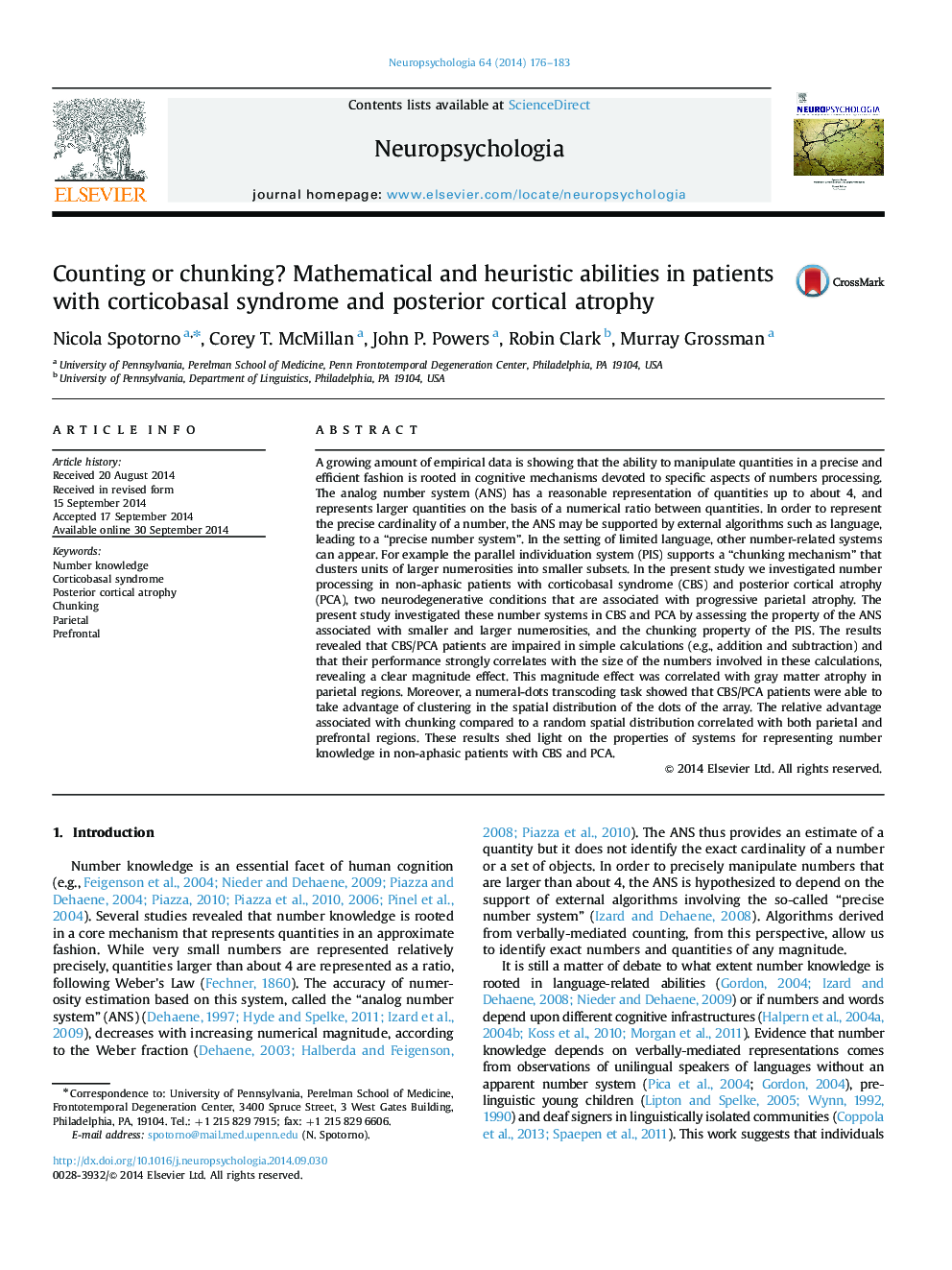| کد مقاله | کد نشریه | سال انتشار | مقاله انگلیسی | نسخه تمام متن |
|---|---|---|---|---|
| 7320776 | 1475589 | 2014 | 8 صفحه PDF | دانلود رایگان |
عنوان انگلیسی مقاله ISI
Counting or chunking? Mathematical and heuristic abilities in patients with corticobasal syndrome and posterior cortical atrophy
ترجمه فارسی عنوان
شمارش یا تراکم؟ توانایی های ریاضی و اکتشافی در بیماران مبتلا به سندرم کورتیکوباسال و آتروفی خلفی
دانلود مقاله + سفارش ترجمه
دانلود مقاله ISI انگلیسی
رایگان برای ایرانیان
کلمات کلیدی
دانش تعداد، سندرم کورتیزوبازال، آتروفی قشر پشتی، خرابکاری، پاریتال، پیش فرنتن،
موضوعات مرتبط
علوم زیستی و بیوفناوری
علم عصب شناسی
علوم اعصاب رفتاری
چکیده انگلیسی
A growing amount of empirical data is showing that the ability to manipulate quantities in a precise and efficient fashion is rooted in cognitive mechanisms devoted to specific aspects of numbers processing. The analog number system (ANS) has a reasonable representation of quantities up to about 4, and represents larger quantities on the basis of a numerical ratio between quantities. In order to represent the precise cardinality of a number, the ANS may be supported by external algorithms such as language, leading to a “precise number system”. In the setting of limited language, other number-related systems can appear. For example the parallel individuation system (PIS) supports a “chunking mechanism” that clusters units of larger numerosities into smaller subsets. In the present study we investigated number processing in non-aphasic patients with corticobasal syndrome (CBS) and posterior cortical atrophy (PCA), two neurodegenerative conditions that are associated with progressive parietal atrophy. The present study investigated these number systems in CBS and PCA by assessing the property of the ANS associated with smaller and larger numerosities, and the chunking property of the PIS. The results revealed that CBS/PCA patients are impaired in simple calculations (e.g., addition and subtraction) and that their performance strongly correlates with the size of the numbers involved in these calculations, revealing a clear magnitude effect. This magnitude effect was correlated with gray matter atrophy in parietal regions. Moreover, a numeral-dots transcoding task showed that CBS/PCA patients were able to take advantage of clustering in the spatial distribution of the dots of the array. The relative advantage associated with chunking compared to a random spatial distribution correlated with both parietal and prefrontal regions. These results shed light on the properties of systems for representing number knowledge in non-aphasic patients with CBS and PCA.
ناشر
Database: Elsevier - ScienceDirect (ساینس دایرکت)
Journal: Neuropsychologia - Volume 64, November 2014, Pages 176-183
Journal: Neuropsychologia - Volume 64, November 2014, Pages 176-183
نویسندگان
Nicola Spotorno, Corey T. McMillan, John P. Powers, Robin Clark, Murray Grossman,
